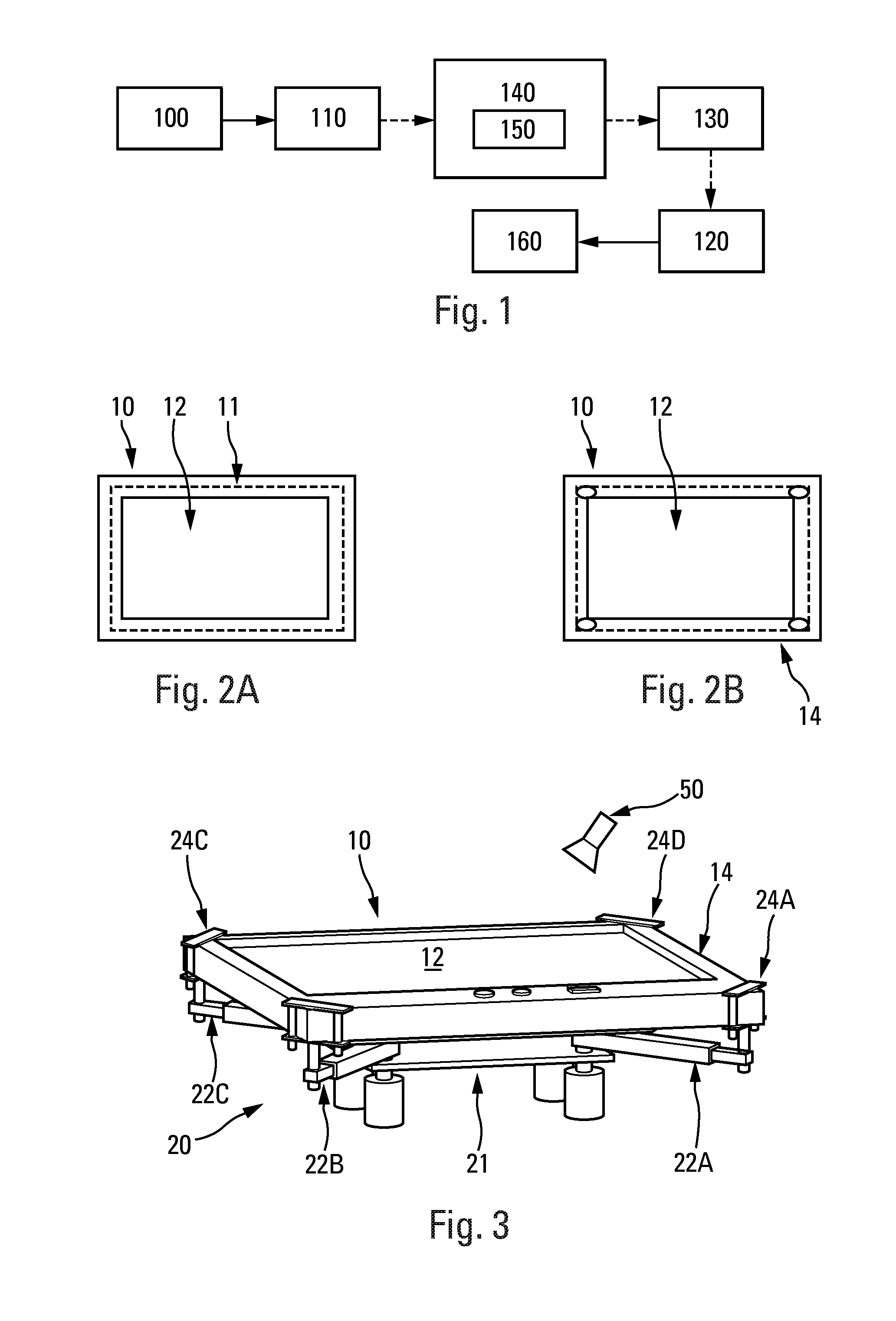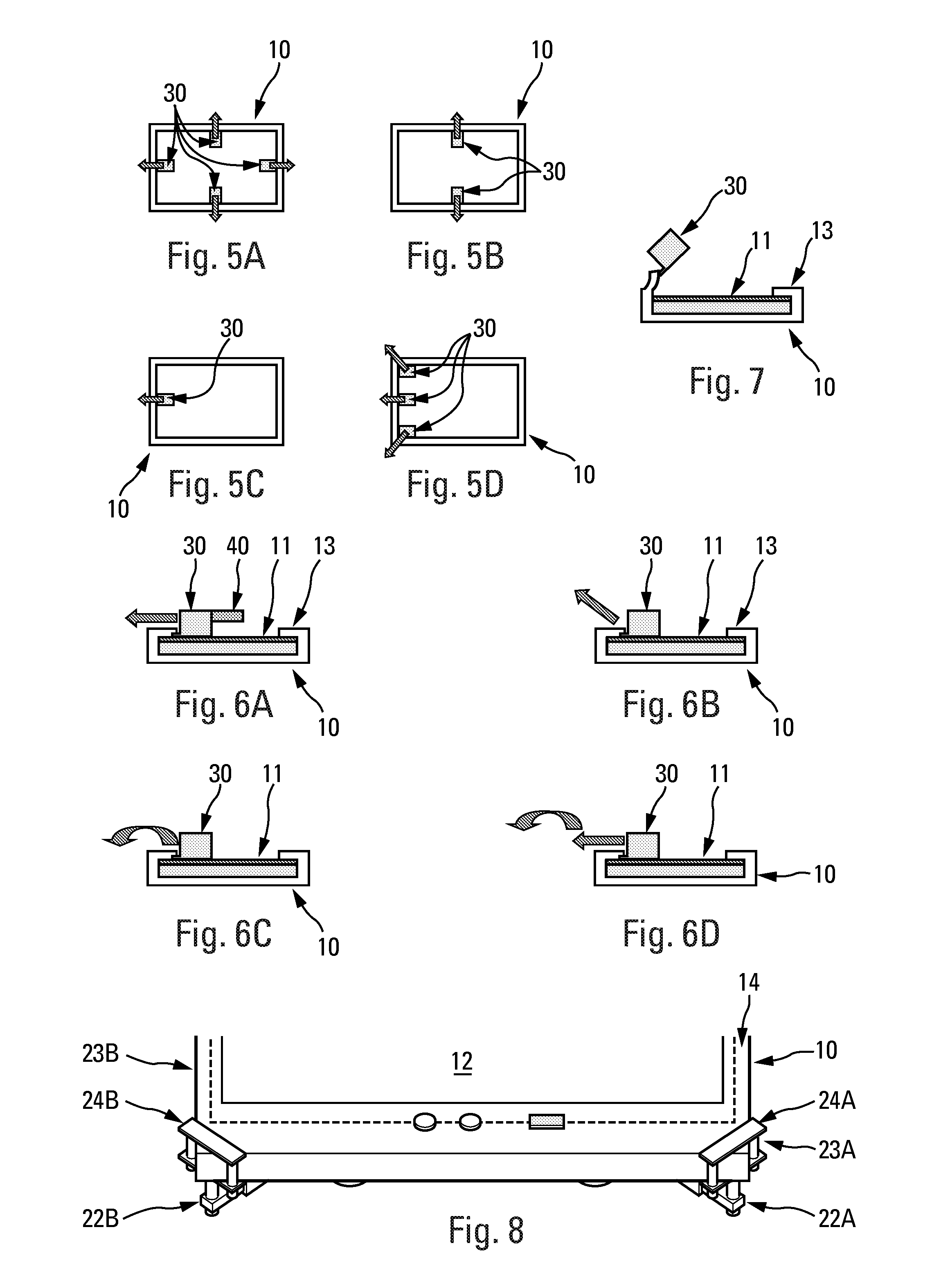Method for at least partially deconstructing a flat display screen
a flat display screen and deconstruction technology, applied in the field of deconstruction, can solve the problems of releasing gases and toxic substances such as mercury, mercury released tends to pollute the other screen members, and plastic becomes difficult to recycl
- Summary
- Abstract
- Description
- Claims
- Application Information
AI Technical Summary
Benefits of technology
Problems solved by technology
Method used
Image
Examples
Embodiment Construction
[0072]These days, there are flat screens in many fields: computer monitors, televisions, tablet PCs, navigation devices, etc. For environmental reasons, it is desirable that all flat screens be deconstructed at the end of life, in order to make the treatment of their components possible, particularly their recovery.
[0073]All flat panel screens include a faceplate, which allows for the display on the front side of the screen.
[0074]By faceplate 11 or matrix, is meant the generally rectangular portion of a flat screen 10 whereon the image is formed. For an LCD screen 10, the polluting elements are the liquid crystals enclosed between two fine glass plates and which allow for the formation of the image.
[0075]Certain flat screens comprise backlight lamps, placed behind the faceplate 11 with respect to the display. Some lamps may also contain polluting elements (for example, mercury).
[0076]The faceplate 11 is contained in a frame 13.
[0077]The frame 13 is generally made of metal and has a ...
PUM
 Login to View More
Login to View More Abstract
Description
Claims
Application Information
 Login to View More
Login to View More - R&D
- Intellectual Property
- Life Sciences
- Materials
- Tech Scout
- Unparalleled Data Quality
- Higher Quality Content
- 60% Fewer Hallucinations
Browse by: Latest US Patents, China's latest patents, Technical Efficacy Thesaurus, Application Domain, Technology Topic, Popular Technical Reports.
© 2025 PatSnap. All rights reserved.Legal|Privacy policy|Modern Slavery Act Transparency Statement|Sitemap|About US| Contact US: help@patsnap.com



